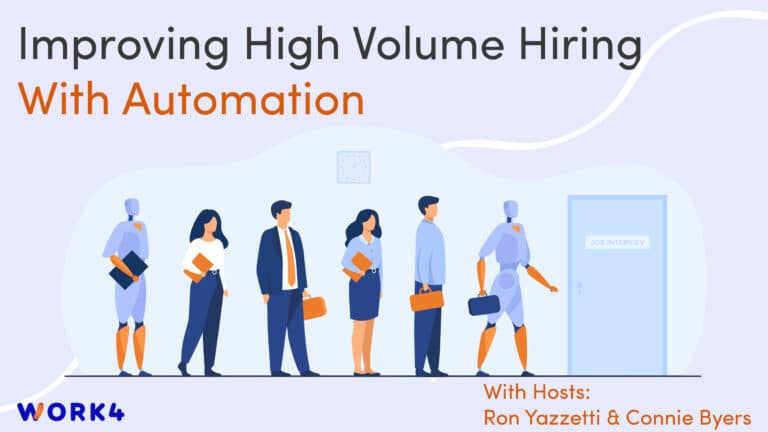It’s no secret that the trucking industry has been grappling with a driver shortage for years. But now that shortage has been exacerbated and brought to the forefront of the country’s attention by the ongoing pandemic. According to estimates from the American Trucking Associations (ATA), the United States is currently facing a shortage of more than 80,000 truck drivers. Furthermore, that number is projected to grow to as much as 160,000 by the year 2030. With more than 70% of the nation’s freight being transported by commercial trucks, the driver shortage is creating unprecedented supply chain disruptions and increasing concern across the trucking industry. This has driven some industry leaders to call for legislative action. Action that has come in the form of the newly created Developing Responsible Individuals for a Vibrant Economy (DRIVE) Safe Act and the Safe Driver Apprenticeship Pilot (SDAP) Program.
What is the DRIVE Safe Act?
Created by a bipartisan group of lawmakers in both the House and Senate, the Developing Responsible Individuals for a Vibrant Economy (DRIVE) Safe Act was introduced in 2021.
The Act is aimed at alleviating the trucking industry’s ongoing driver shortage by making it possible for commercial driver’s license (CDL) holders ages 18 to 20 to operate interstate routes after completing a rigorous apprenticeship program.
Currently, CDL holders who are over 18 but under 21 are only permitted to drive commercial motor vehicles (CMV) within state lines (applicable in every state but Hawaii). The DRIVE Safe Act would override a federal law banning CDL drivers under the age of 21 from driving a CMV across state lines, a law that has been in place since 1931.
What is the Safe Driver Apprenticeship Pilot Program?
In conjunction with the DRIVE Safe Act, the SDAP program is designed to test the viability of bringing younger drivers to the industry as a standard and will study if well-trained younger drivers can operate as safely as their older counterparts. On January 14, 2022, the FMCSA outlined the requirements of the pilot program in its Federal Register notice. The three-year test program will help individuals ages 18, 19, and 20 explore interstate trucking as a career, help trucking companies bring younger drivers into the industry, and potentially present some relief from the ongoing driver shortage.
What are the Motor Carrier Eligibility Requirements?
Carriers wishing to participate in the pilot program must complete an application through the FMCSA. Applications are not yet open, but the FMCSA is advising carriers to become familiar with the pilot program requirements now. Another preparation step is to register with the U.S. Department of Labor Registered Apprenticeship Program.
Lastly, they recommend that you review your safety performance data to determine if your company meets the standards for participation including a satisfactory safety rating and no open enforcement actions in the previous six years. You can view the full list of motor carrier eligibility criteria here.
Which Motor Carriers Ineligible?
Not all carriers will meet the program participation requirements. Carriers with a conditional or unsatisfactory safety rating are ineligible, as are those whose driver or vehicle out of service rates from roadside inspections are above the national averages. Additionally, carriers with an open enforcement action (Imminent Hazard, Operations OOS Orders, Patterns of Safety Violations) in the previous six years are ineligible to participate. Carriers with a DOT recordable crash rate above the national average are also ineligible. And lastly, carriers considered high risk or moderate risk, based on FMCSA’s current prioritization methodology under CSA, will also be considered ineligible.
How Will Carriers be Selected?
The FMCSA says that they will prioritize carrier applicants based largely on their safety performance and records over time. They will also be looking at things such as technologies offered, average on-duty time, incident reports, inspection data, and more to make the final decisions about the program and possible motor carrier participants. Selection preference will be given to the carriers with the highest or best relative performance.
What are the Driver Participation Requirements?
It’s important to note first that no more than 3,000 apprentices will be allowed to participate at any given time. Past that, the SDAP program is open to 18- to 20-year-old drivers who already hold a commercial driver’s license (CDL) in their state. To qualify for participation, CDL holders must meet certain standards outlined here in the Federal Register notice. If a participant has a major offense, serious traffic violation, railroad-highway grade crossing violation, or violation of an out-of-service order during the pilot program, he or she will be disqualified and removed from the program.
Apprenticeship Requirements
Among other requirements, drivers must not have had their license suspended, revoked, canceled, or disqualified or a violation related to 49 CFR §383.51.
Mentor Requirements
Mentors must be at least 26 years old with at least five years of experience operating a CMV in interstate commerce. An eligible experienced driver must not have had a preventable reportable accident, or a pointed moving violation.
Probationary Periods & Performance Benchmarks
The apprenticeship program pilot consists of two safety training probationary periods. During both probationary periods, an apprentice may transport goods across state lines but must be accompanied by an experienced driver in the passenger seat. The FMCSA defines an experienced driver as “one at least 26 years old who has held a CDL, been employed for at least the past two years, has at least five years of interstate CMV experience, and has had no preventable accidents reportable to the agency or pointed moving violations.”
The First Probationary Period – 120-Hours
The first period must include at least 120 hours of on-duty time, of which at least 80 hours are driving time in a CMV. During this period, the employing motor carrier must ensure the apprentice completes the required hours of driving time and is competent in each of the following areas:
- Interstate
- City traffic
- Rural 2-lane and evening driving
- Safety awareness
- Speed and space management
- Lane control
- Mirror scanning
- Right and left turns
- Logging and complying with rules relating to hours of service
After the 120-hour probationary period is complete, the apprentice must then complete the second probationary period.
The Second Probationary Period – 280-Hours
During the second probationary period, the apprentice must complete 280 hours of on-duty time, including no fewer than 160 hours of driving time in a CMV. During this period, the employing motor carrier must ensure the apprentice completes the required driving time and is competent in each of the following areas:
- Backing and maneuvering in close quarters
- Pre-trip inspections
- Fueling procedures
- Weighing loads
- Weight distribution and sliding tandems
- Coupling and uncoupling procedures
- Trip planning, truck routes, map reading, navigation, and permits
Once an apprentice completes both probationary periods, they are then permitted to cross state lines without being accompanied by another driver. However, the FMCSA notes that the apprentice is “still considered to be participating in the SDAP Program, and their safety performance must continue to be monitored by the employing motor carrier, including monthly safety performance reports filed with FMCSA, until the driver reaches the age of 21.”
What Vehicle Safety Technology Requirements are There?
All CMVs operated by apprentices as part of the SDAP program must be equipped with the following specific vehicle safety technologies:
- An automatic manual or automatic transmission.
- An active braking collision mitigation system.
- A forward-facing video event capture system.
- A governed speed of 65 miles per hour at the pedal and under adaptive cruise control.
What are the Motor Carrier Reporting Requirements?
Motor Carriers participating in the SDAP program will be required to submit monthly data on each apprentice’s activity including:
- Duty hours
- Vehicle miles traveled
- Driving hours
- Off-duty time, or breaks
- Safety outcomes (including crashes, violations, and safety-critical events)
- Any additional supporting information (such as data from onboard monitoring systems or investigative reports from previous crashes).
In addition, participating motor carriers will be required to notify the FMCSA within 24 hours of:
- Any injury or fatal crash involving an apprentice.
- An apprentice receiving an alcohol-related citation in any vehicle such as a DUI
- An apprentice choosing to leave the pilot program.
- An apprentice leaving the carrier.
- An apprentice failing a random or post-crash drug/alcohol test.
Conclusion
The Safe Driver Apprenticeship Pilot Program is an excellent opportunity for motor carriers to begin tapping into a younger driver pool. Though it will take considerable work, and there will surely be growing pains, ultimately, the data provided through this program could justify the FMCSA making permanent amendments to its rules to allow younger drivers permanently.
To stay up to date on all the current CDL trucking trends be sure to check out Work4’s blog and be sure to check out our 2022 Driver Recruiting Report for an inside look at how drivers feel about the industry’s hottest topics. If you’d like to try out all of the features of our custom ads campaigns for 5 weeks and see the difference in your recruiting stats click the link below to see if you qualify for our free trial program!








